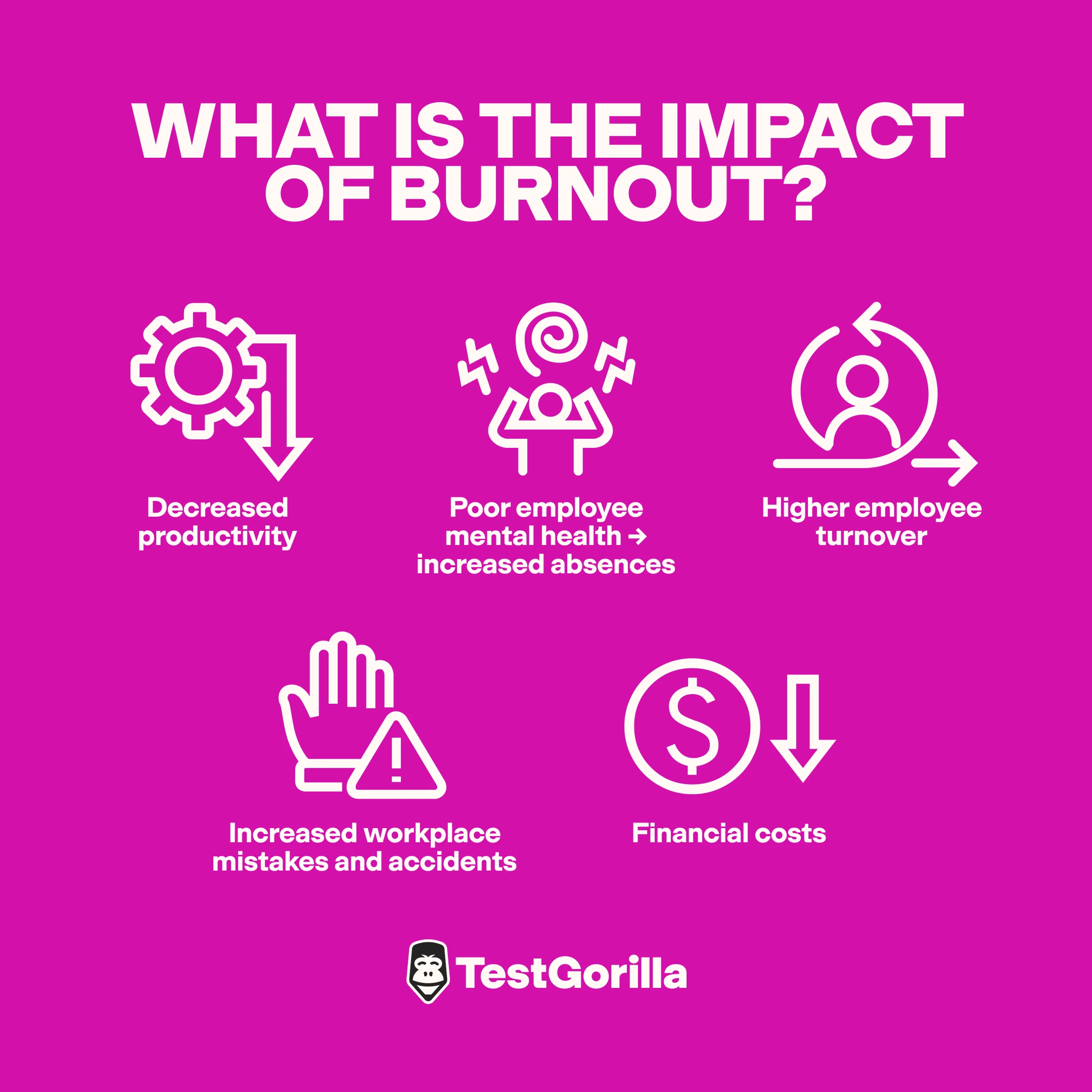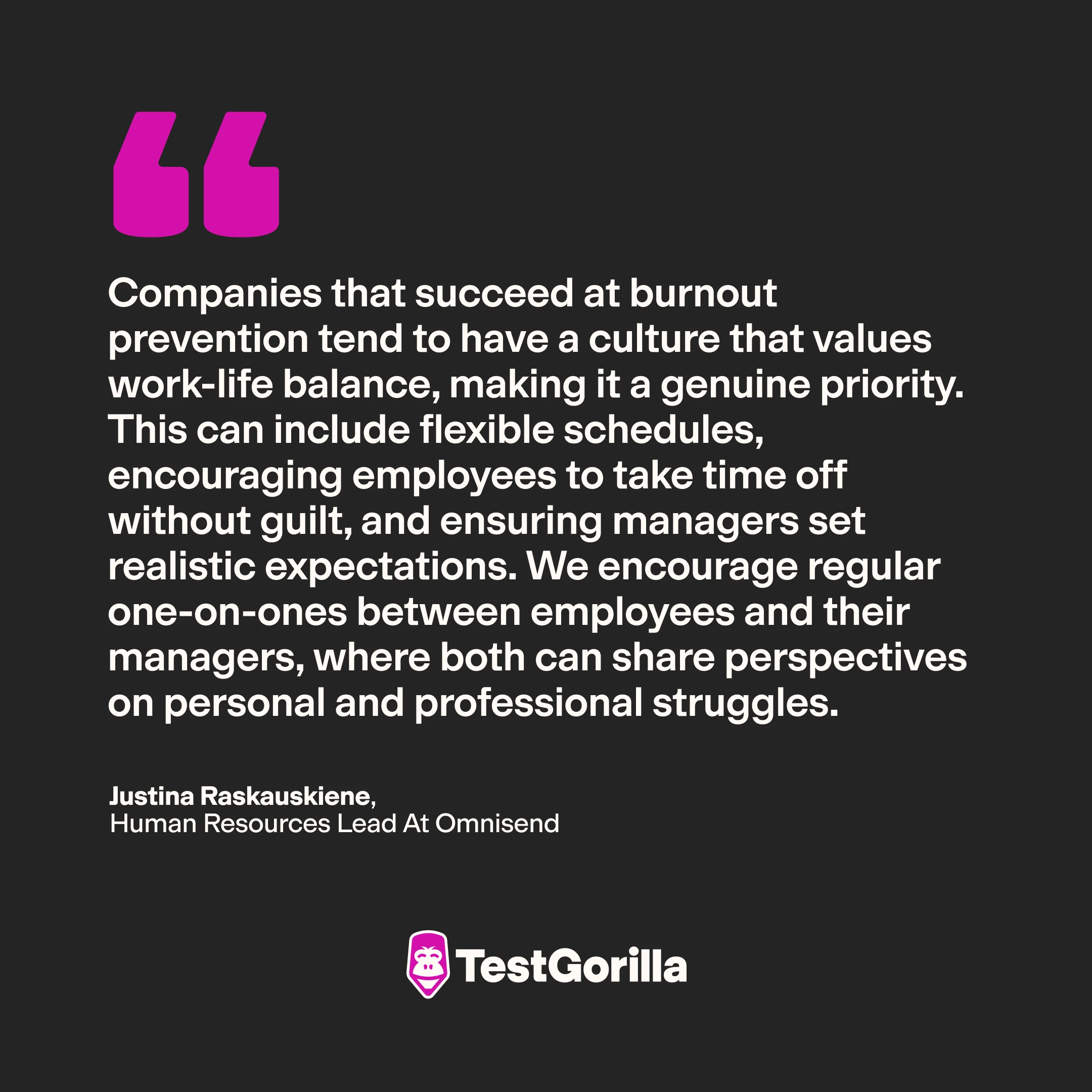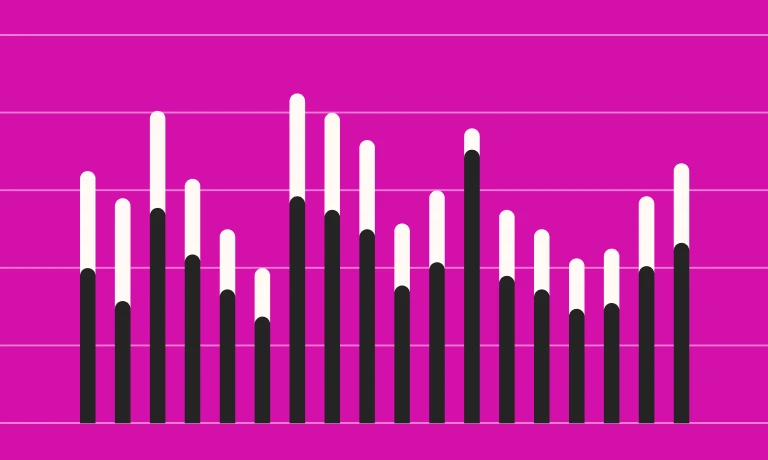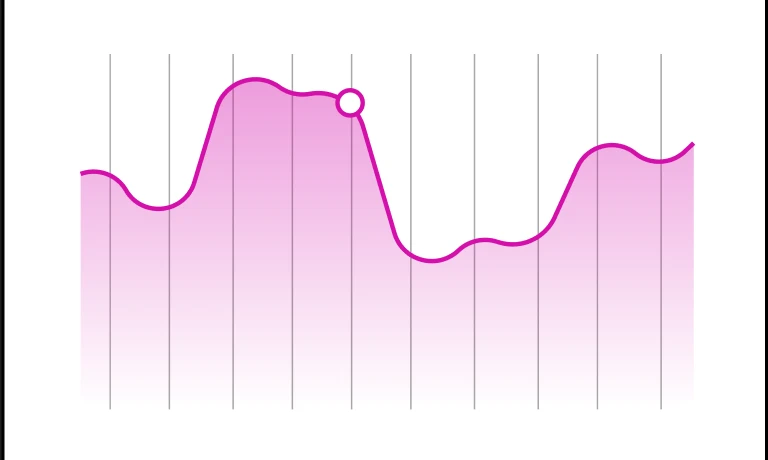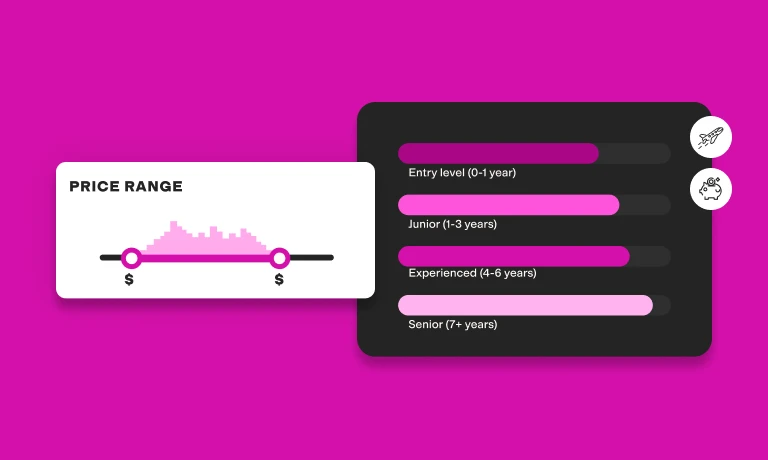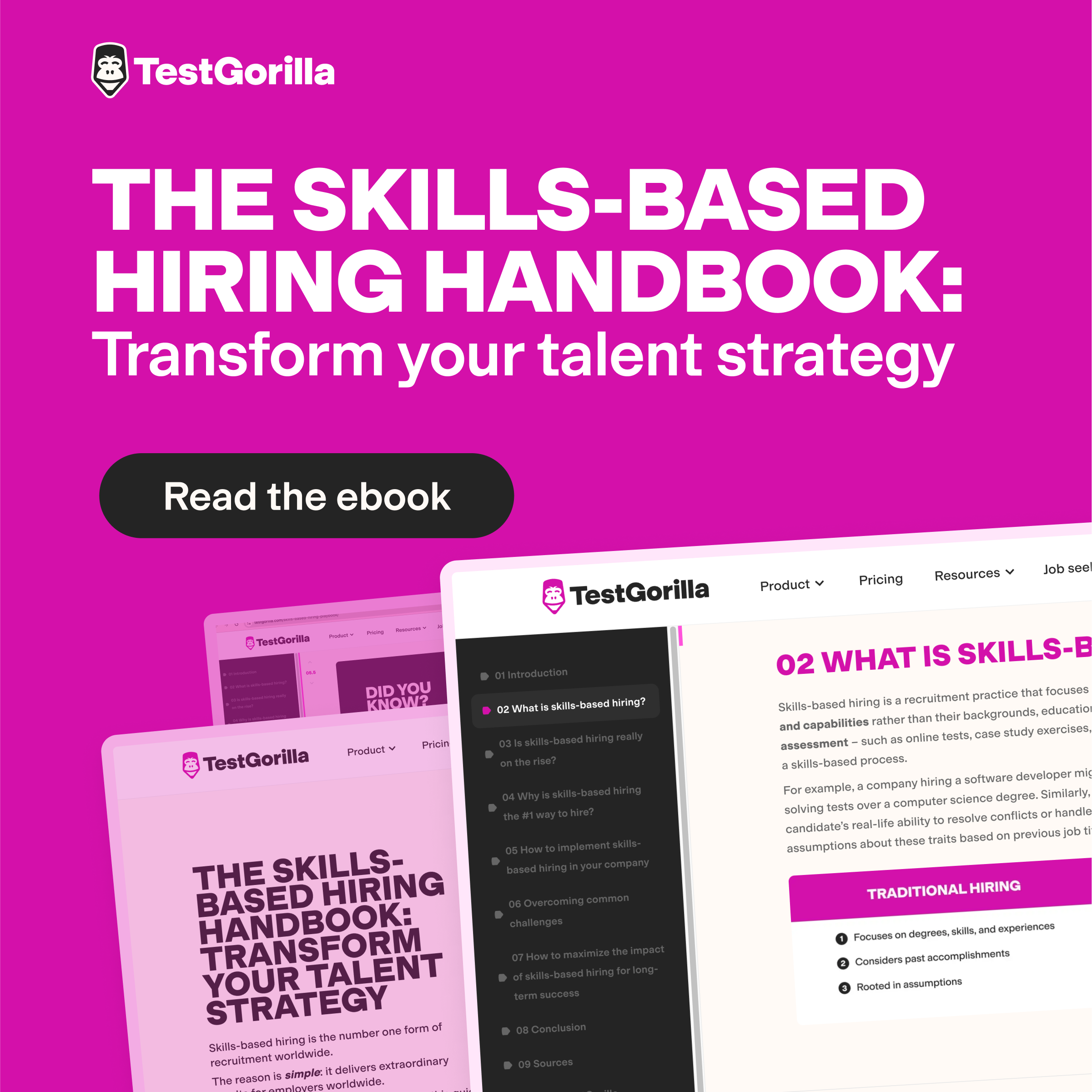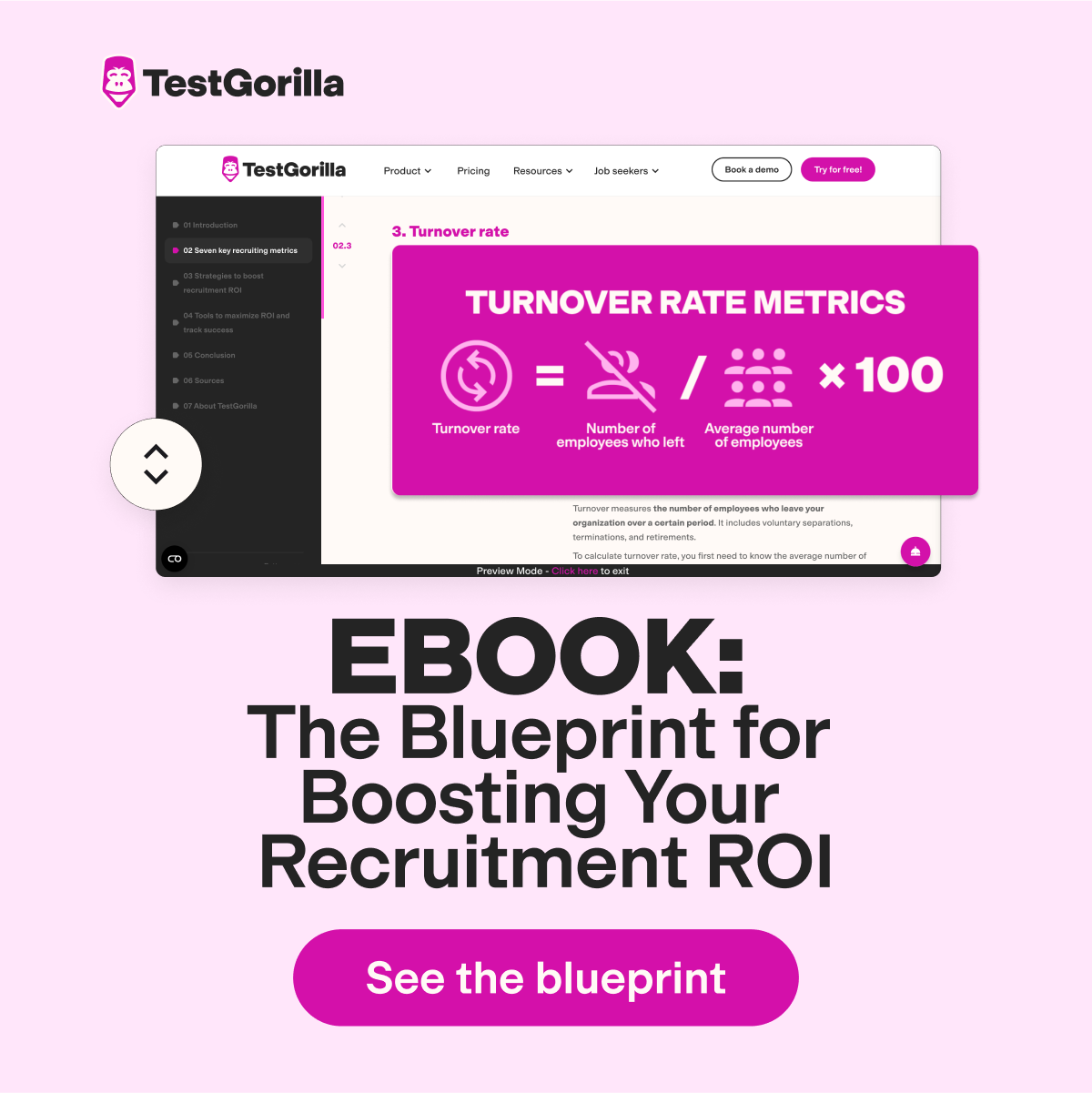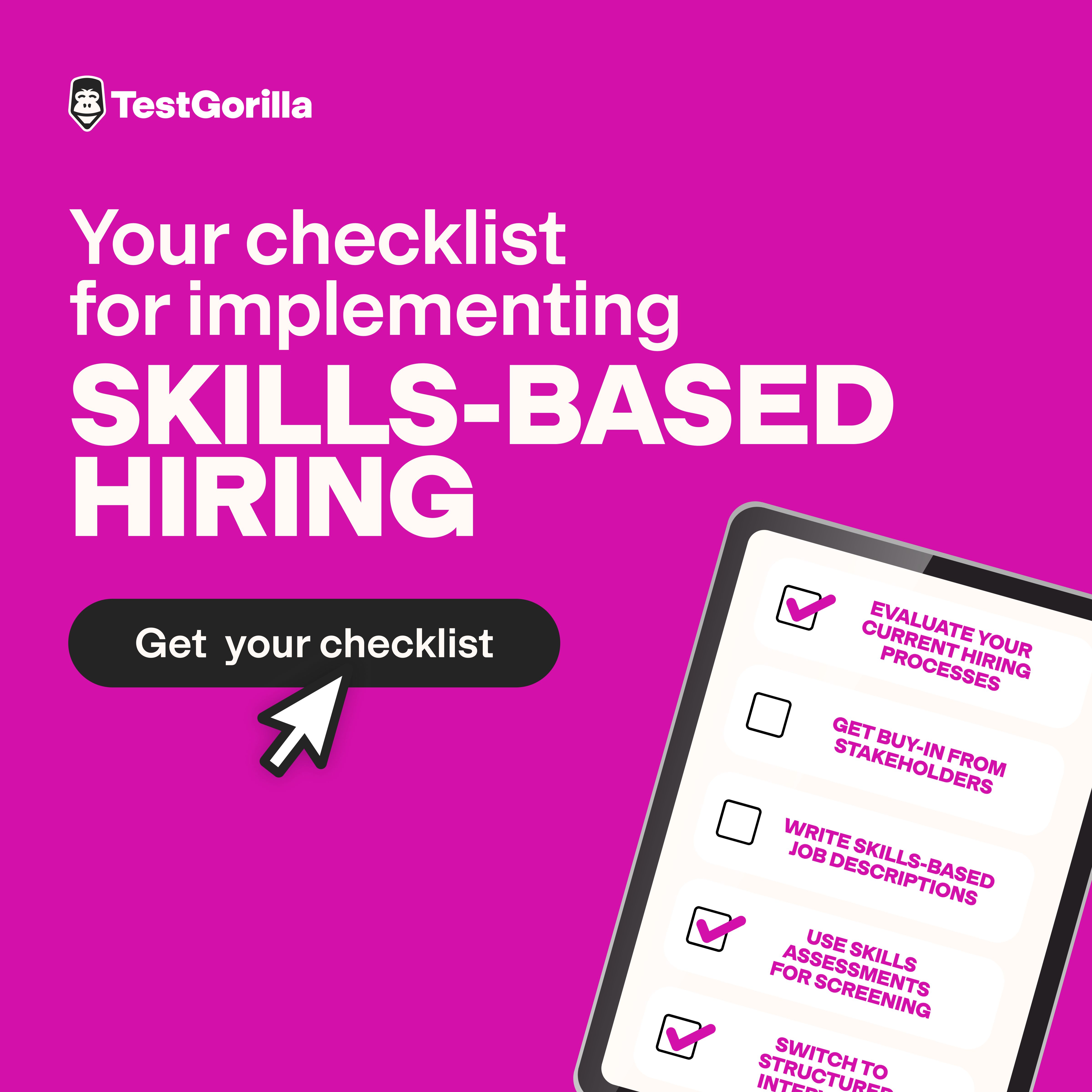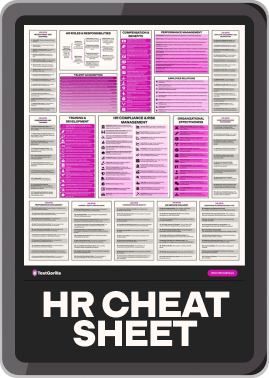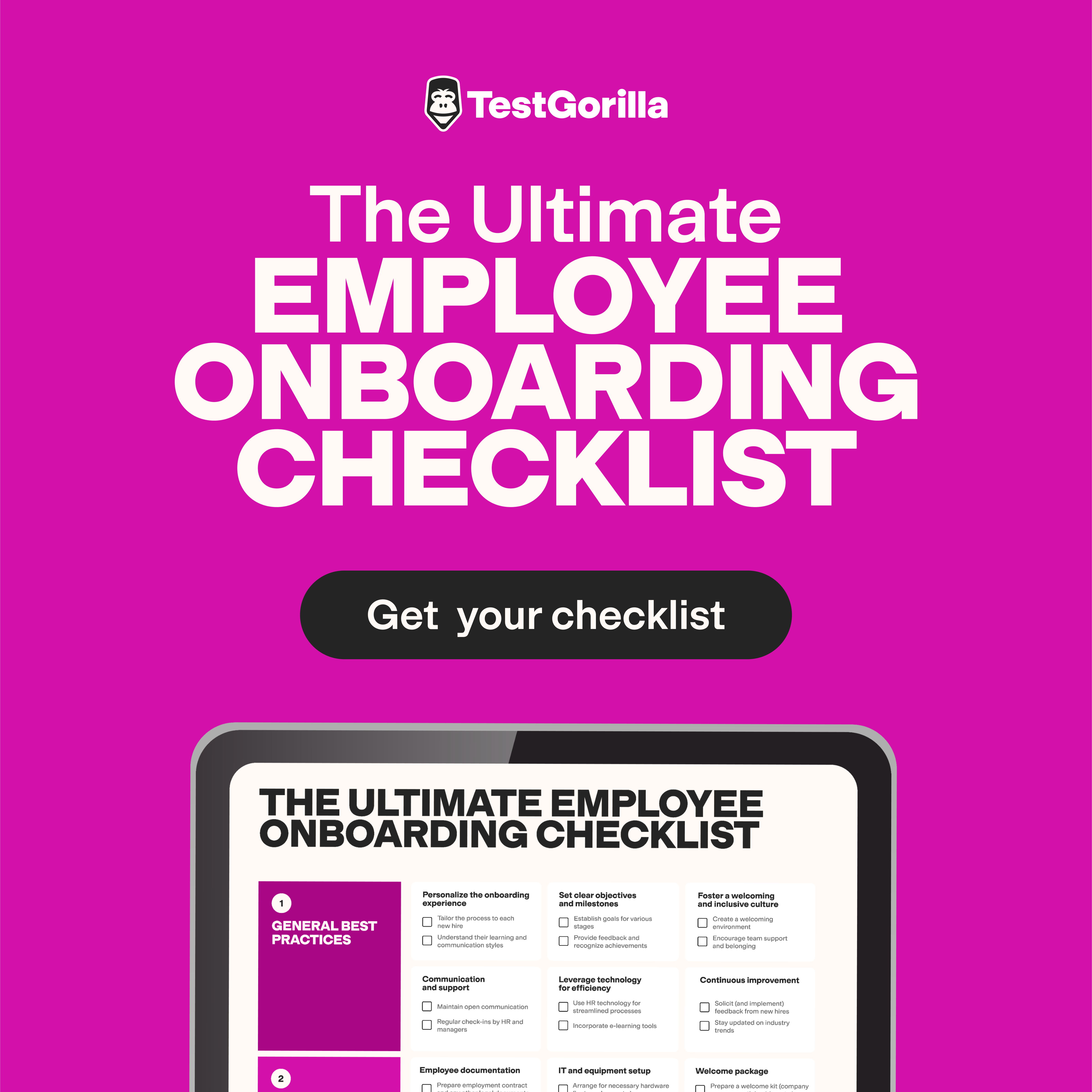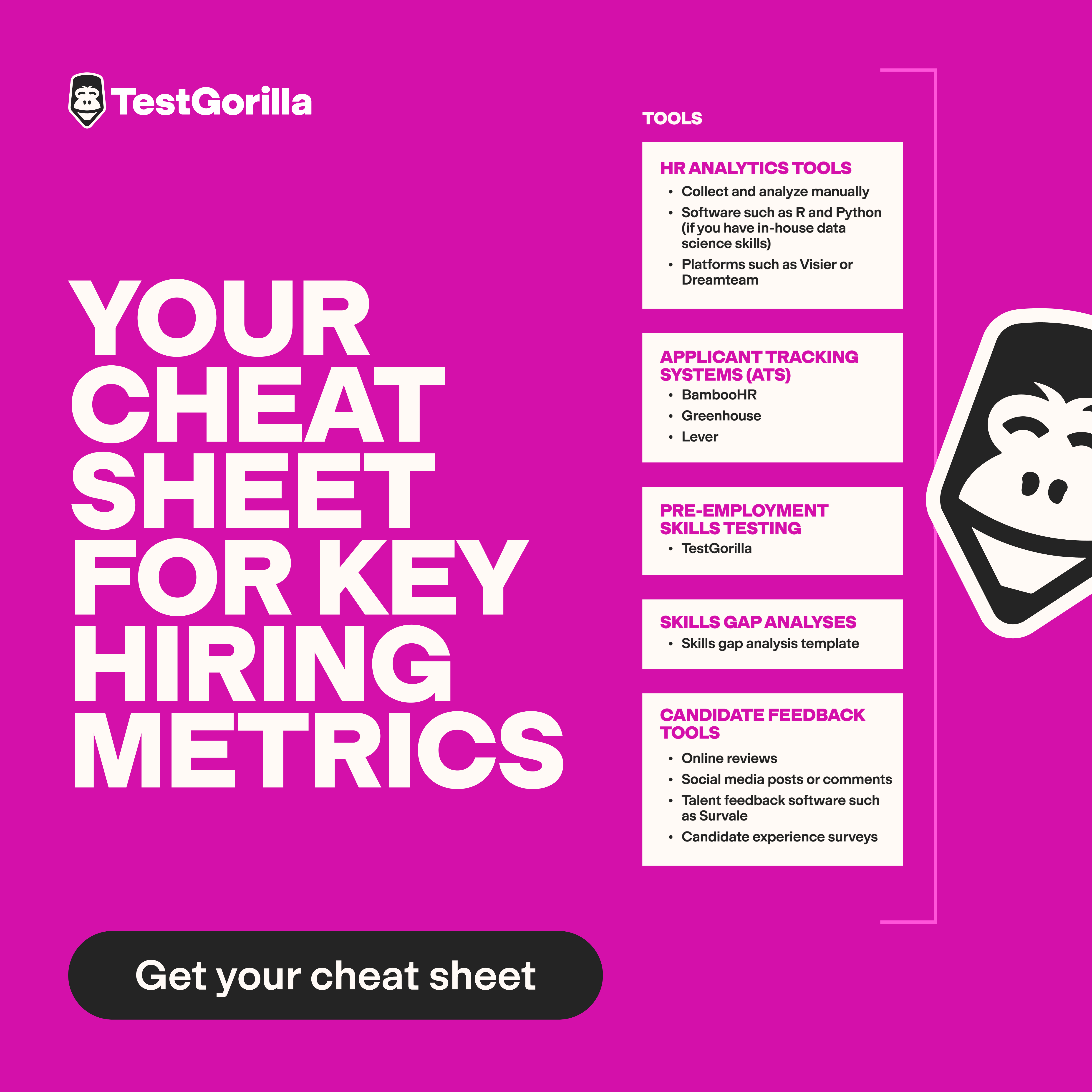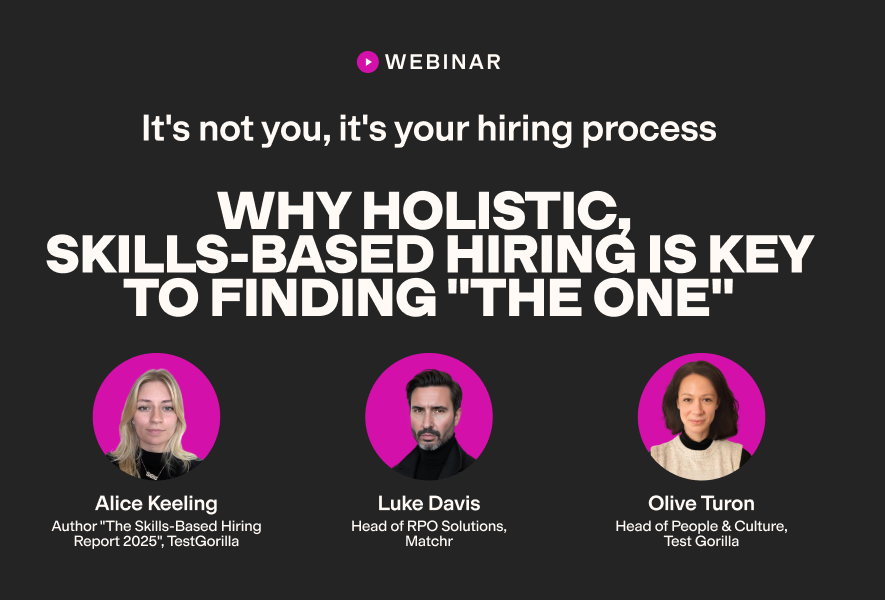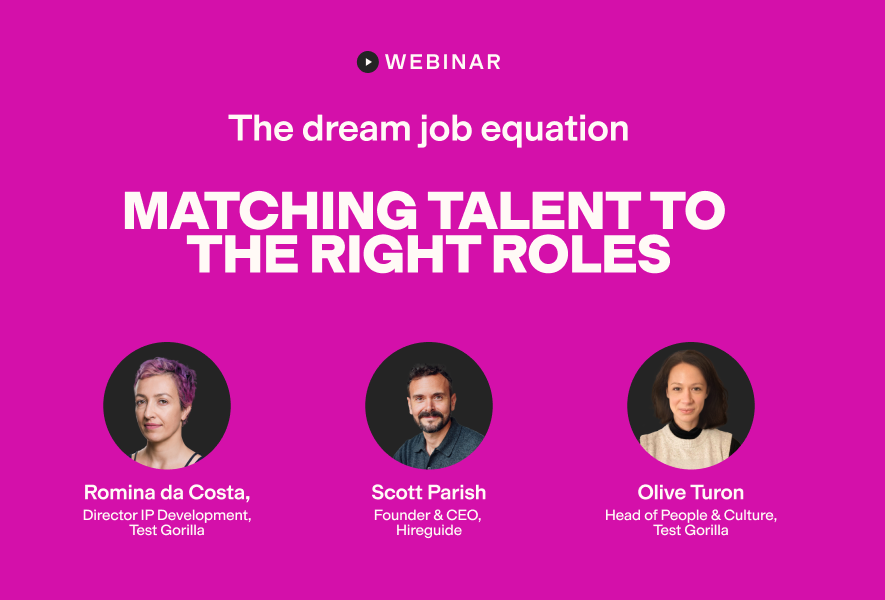The burnout balance sheet: How overworked employees are undermining your business
“An employee who works 80 hours a week should be twice as productive as someone working 40.”
Unfortunately, this flawed logic is driving many employers to increase employee working hours. But while some celebrate the “infinite workday” becoming more and more common, they’re missing the real cost: burned-out employees who are less productive, less engaged, and more likely to leave.
At TestGorilla, we’re here to explain this burnout balance sheet: the hidden equation that shows how pushing for more hours leads to outcomes that harm your business.
The rise of the infinite workday
Following the COVID-19 pandemic, the line between work and personal life has blurred. Today’s workers regularly receive communications at all hours of the day, and many are working outside typical hours. Recent research by Microsoft coined this phenomenon the “infinite workday.”
The company’s 2025 Work Trend Index Special Report revealed some concerning facts:
An average of 58 chats are sent outside of standard work hours (9 am–5 pm) each day, representing a 15% year-over-year increase.
Many workers are online by 6 am to try to get ahead of their workday, with 40% checking their email inboxes to prepare for the day.
There’s a 16% increase in post-8 pm meetings year-over-year, mainly due to international and flexible teams.
29% of employees log back on by 10 pm to check email inboxes.
Microsoft notes that this “triple peak day” is a new trend. In the past, workers experienced two productivity peaks: one before and one after lunch. During the pandemic, a third peak emerged, between 6 and 8 pm. According to the report, this is a result of the rise of remote and hybrid work, more flexibility for workers, and the ever-present need for work-life balance.
Additionally, there has been a noticeable increase in weekend work, with 20% of employees working weekends and checking their emails before noon.
In other words, for many people, the workday no longer has defined boundaries or set start and end times. Instead, employers are expecting workers to be available the entire “infinite workday.”
The productivity myth: Common employer misconceptions about longer working hours
Several high-profile business leaders have praised the 80-hour workweek (or longer).
In 2018, Elon Musk infamously posted online, “Nobody ever changed the world on 40 hours a week… [the right number of hours] varies per person, but about 80 sustained, peaking above 100 at times.” A year later, Alibaba founder Jack Ma expressed his support for the “996 system,” which involves working from 9 am to 9 pm, 6 days a week.
More recently, L & T Chairman SN Subrahmanyan told his employees, “I regret I am not able to make you work on Sundays. If I can make you work on Sundays, I will be [happier], because I work on Sundays. If you have got to be on top of the world, you have to work 90 hours a week.”
While these are extreme examples, these business leaders are saying out loud what many are (wrongly) thinking: longer hours equal more productivity. They feel they’re getting the most out of their employees, and, in industries or roles without overtime, for free.
The burnout balance sheet: What really happens when employees work longer hours
Employers who agree with the above statements are falling for the productivity myth. When employees consistently work extended hours, they don’t get more done. They burn out.
The World Health Organization defines burnout as being characterized by:
Feelings of energy depletion or exhaustion
Increased mental distance from work or negative feelings toward it
Reduced professional efficacy
Today’s workers are burning out at unprecedented rates. According to a recent survey by the Society for Human Resource Management (SHRM), 44% of US workers feel burned out at work, with 51% feeling “used up” by the end of the day.
These statistics are even higher in some industries. HR leader Kirsty Baggs-Moran previously told TestGorilla, “I did an HR well-being survey at the end of [2024], and 78% of respondents said they’ve experienced burnout either once or more than once. About 30% said they’ve experienced it more than once, and that just blows my mind.”
The impact of burnout goes far beyond individual employee well-being. It has a ripple effect on everything from productivity and absenteeism to turnover, safety, and – ultimately – the company’s bottom line.
Let’s see how this ripple effect plays out:
Decreased productivity
We’ve known for a long time that working more than 50 hours a week can harm productivity. In 2014, Stanford University published a study detailing that worker productivity noticeably declines after 50 hours a week – and after 70 hours, there’s no gain at all.
What’s the explanation for this? Employees simply become less efficient as they work more due to stress and fatigue. Eventually, their output cancels out their earlier productivity – for example, by making mistakes that cost the business time and money, or even injuring themselves.
For this article, we spoke with Julia Simkus, a resume writer and career exploration expert, who also highlighted the more subtle impacts of burnout on productivity:
“Even when employees aren’t quitting, they’re often quietly disengaging: missing deadlines, avoiding team collaboration, or producing work that feels rushed and lacks attention to detail.”
Poor employee mental health → increased absences
It’s well documented that longer working hours negatively affect both physical and mental health. For example, one study found that extended work hours lead to higher levels of anxiety and depression symptoms.
According to Gallup research, burned-out workers are 63% more likely to take a sick day. And when they do come into work, their effectiveness and productivity are affected due to fatigue and stress.
These absences aren’t just disruptive – they’re expensive. The Irish Business and Employers Confederation (IBEC) estimates that poor mental health costs employers up to €2,000 per employee each year.
Rising absenteeism can lead to a wave of resignations, which opens up another set of problems for employers.
Higher employee turnover
Workplace burnout doesn’t just affect how employees perform – it changes how they feel about their jobs. As Dr. Yuxin Sun, licensed psychologist specializing in stress, burnout, and perfectionism, explains to TestGorilla:
“I have seen [burned-out] employees build a sense of resentment and helplessness. [...] When the burnout went unaddressed, their passion and enthusiasm for the work and the company dwindled over time. They became less able to ensure the high quality of the work they produce, and eventually, leaving the company became the only way out of the burnout.
It’s no surprise, then, that burned-out workers contribute significantly to employee retention statistics. These employees are nearly three times more likely to be actively looking for another job.
High turnover disrupts team dynamics, creates a hurdle to building a strong work culture, and is incredibly costly.
Gallup research estimates that voluntary turnover resulting from burnout can cost 15–20% of total payroll. And at a minimum, rehiring for a role can cost between 0.5 and 2 times the annual salary of the employee who left. That’s without accounting for any indirect costs, such as the loss of institutional knowledge, missed deadlines, lower team morale, and time spent onboarding and training a new employee.
With employers saying it’s harder than ever to find talent, these losses are especially frustrating when they’re due to long work hours and burnout – because they’re avoidable.
Increased workplace mistakes and accidents
Burned-out employees are more prone to making mistakes, especially in high-pressure environments. Fatigue and mental exhaustion reduce focus, slow reaction time, and increase the risk of accidents.
In some settings, the consequences are dire. A study on healthcare workers found that:
Nurses working more than 12.5 hours per shift were significantly more likely to suffer injuries or make medical errors.
Trainee physicians working 24-plus-hour on-call shifts made 36% more serious medical errors and three times more fatigue-related errors linked to patient deaths than those working 16-hour shifts.
While much of the research focuses on workplaces in the healthcare sector, the link between fatigue, stress, and costly errors is relevant across all industries.
Financial costs
Burnout caused by work overload affects every part of your business and work environment: productivity, retention, employee engagement, safety, and culture. All of these impacts take a swing at your bottom line, as we’ve covered.
In total, burnout and employee disengagement cost an average US company with 1,000 employees around $5.04 million per year.
In this context, the true cost of overwork becomes clear: It’s as economic as it is human.
The best insights on HR and recruitment, delivered to your inbox.
Biweekly updates. No spam. Unsubscribe any time.
Reframe your priorities
As you’ve seen, the costs of long working hours and associated burnout far outweigh any perceived gains. For employers who still believe the infinite work day is the key to higher performance and better results, it’s time for a shift in mindset.
This shift starts with understanding that quality, not quantity, drives productivity.
Organizations need to move away from measuring performance by time spent and instead focus on meaningful outcomes and the quality of work. These are the metrics that truly matter.
There also needs to be a change in hiring approach. Employers should prioritize hiring for the long term by seeking candidates with people-first values, rather than those who embrace hustle culture, which often leads to burnout. Using talent assessments, particularly a test like TestGorilla’s Culture Add test, is one of the best ways to gain insights into candidates’ mindsets and identify burnout-prone behaviors at an early stage.
Additionally, executive leadership and management must lead by example. This includes modeling healthy boundaries, such as avoiding after-hours emails and setting clear expectations regarding availability, as well as practicing mindfulness at work.
Changes like these help shape a positive company culture, which plays a crucial role in managing expectations around work hours. As Justina Raskauskiene, Human Resources Lead at Omnisend, explains:
“Companies that succeed at burnout prevention tend to have a culture that values work-life balance, making it a genuine priority. This can include flexible schedules, encouraging employees to take time off without guilt, and ensuring managers set realistic expectations. We encourage regular one-on-ones between employees and their managers, where both can share perspectives on personal and professional struggles.”
By rethinking what success looks like – and how it’s measured – you create a healthier, more sustainable environment where people can do their best work without burning out.
Overworked employees ≠increased productivity
When you run the numbers on the burnout balance sheet, the outcome is clear: Overwork doesn’t add value – it subtracts it. Overwork leads to employee burnout, which causes higher turnover, decreased productivity, and an increased risk of workplace errors and accidents.
To build a truly productive workplace, stop investing in hours worked and start investing in your people. Because in the long run, employee well-being is your strongest asset.
Related posts
You've scrolled this far
Why not try TestGorilla for free, and see what happens when you put skills first.


